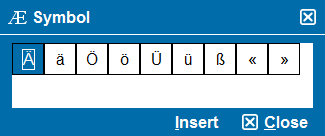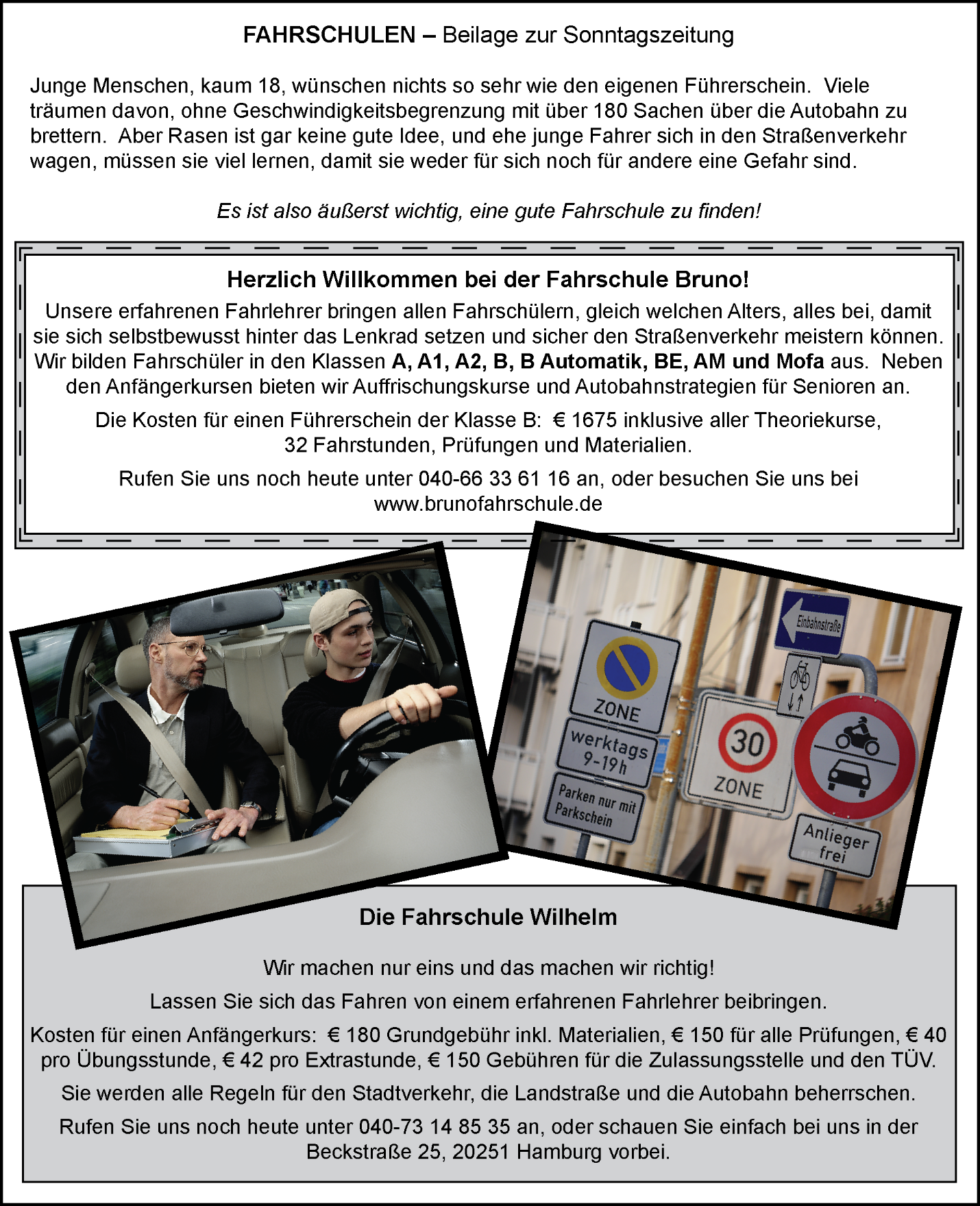Study Guide
Field 122: German CST
Pedagogical Content Knowledge
Recommendation for individuals using a screenreader: please set your punctuation settings to "most."
Review the
character selector tutorial video ![]() and the special character palette available for the German CST:
and the special character palette available for the German CST:
Directions for Pedagogical Content Knowledge Assignment
For the Pedagogical Content Knowledge section of the test, you will write a response of approximately 400 to 600 words start bold in English end bold to an assignment.
Read the assignment carefully before you begin to write. Think about how you will organize your response. You should use your time to plan, write, review, and edit your response to the assignment. Your final response must be typed in the on-screen response box presented with the assignment.
Please note that special characters (such as letters with accents or other diacritical marks) cannot be entered using the keyboard, but are available for insertion in the on-screen response box. To access these characters, click on the
button that appears in the upper left corner of the screen. Using the mouse, double-click on the character you wish to include in your response, or click on the character and then select "start bold Insert end bold." The character will be inserted where the cursor is positioned in the response box.
Your response will be evaluated according to the following criteria:
- start bold COMPLETENESS: end bold The degree to which the response addresses all parts of the assignment
- start bold ACCURACY: end bold The degree to which the response demonstrates the relevant knowledge and skills accurately and effectively
- start bold DEPTH OF SUPPORT: end bold The degree to which the response provides appropriate examples and details that demonstrate sound reasoning
Your response will be evaluated on the criteria above, not writing ability. However, your response must be communicated clearly enough to permit valid judgment of your knowledge and skills. Your response must be your original work, written in your own words, and not copied or paraphrased from some other work.
Be sure to write about the assigned topic. Remember to review what you have written to ensure that you address all aspects of the assignment and make any changes you think will improve your response.
Select the start bold Next end bold button to continue.
Sample Pedagogical Content Knowledge Assignment
Competency 0005
Pedagogical Content Knowledge
start bold Use the information below and the exhibit provided to complete the assignment that follows. end bold
You are planning instruction for a German language class. Your instruction includes a specific learning goal aligned to the following New York State Learning Standard for Languages Other Than English.
Standard 1: Students will be able to use a language other than English for communication.
You will use the exhibit provided as part of your instruction. To view the exhibit, click the "Exhibit" button on the right above the response box.
Using your knowledge of German and your pedagogical knowledge related to teaching modern languages, write a response in English of approximately 400 to 600 words in which you:
- state the grade level (middle school or high school) of your instruction;
- state the NYS Checkpoint level (A, B, or C) that aligns to your instruction;
- identify a specific learning goal that aligns with the given standard and the grade level and NYS Checkpoint you have identified, and that relates to the given exhibit;
- provide a rationale for the learning goal you have identified;
- describe a research- or evidence-based instructional strategy or activity you would use to promote student achievement of the specified learning goal and explain how you would use the given exhibit to support your instruction; and
- describe an effective formative or summative assessment tool, strategy, or activity you would use to measure student achievement of the specified learning goal.
start italics [The examinee will see the Exhibit
button on screen:
 ] end italics
] end italics
To view the exhibit, the examinee will click the Exhibit button. The pop-up window can then be resized and/or repositioned on the screen so that the examinee can access the information while completing their response.
Exhibit
German Newspaper Advertisement for two driving schools. The heading of the advertisement says FAHRSCHULEN – Beilage zur Sonntagszeitung Then the first section says Junge Menschen, kaum 18, wünschen nichts so sehr wie den eigenen Führerschein. Viele träumen davon, ohne Geschwindigkeitsbegrenzung mit über 180 Sachen über die Autobahn zu brettern. Aber Rasen ist gar keine gute Idee, und ehe junge Fahrer sich in den Straßenverkehr wagen, müssen sie viel lernen, damit sie weder für sich noch für andere eine Gefahr sind. Es ist also äußerst wichtig, eine gute Fahrschule zu finden! the next section has a heading of Herzlich Willkommen bei der Fahrschule Bruno! followed by Unsere erfahrenen Fahrlehrer bringen allen Fahrschülern, gleich welchen Alters, alles bei, damit sie sich selbstbewusst hinter das Lenkrad setzen und sicher den Straßenverkehr meistern können. Wir bilden Fahrschüler in den Klassen A, A1, A2, B, B Automatik, BE, AM und Mofa aus. Neben den Anfängerkursen bieten wir Auffrischungskurse und Autobahnstrategien für Senioren an. Die Kosten für einen Führerschein der Klasse B: ? 1675 inklusive aller Theoriekurse, 32 Fahrstunden, Prüfungen und Materialien. Rufen Sie uns noch heute unter 040-66 33 61 16 an, oder besuchen Sie uns bei www.brunofahrschule.de the next section's heading says Herzlich Willkommen bei der Fahrschule Bruno! then the section says Unsere erfahrenen Fahrlehrer bringen allen Fahrschülern, gleich welchen Alters, alles bei, damit sie sich selbstbewusst hinter das Lenkrad setzen und sicher den Straßenverkehr meistern können. Wir bilden Fahrschüler in den Klassen A, A1, A2, B, B Automatik, BE, AM und Mofa aus. Neben den Anfängerkursen bieten wir Auffrischungskurse und Autobahnstrategien für Senioren an. Die Kosten für einen Führerschein der Klasse B: ? 1675 inklusive aller Theoriekurse, 32 Fahrstunden, Prüfungen und Materialien. Rufen Sie uns noch heute unter 040-66 33 61 16 an, oder besuchen Sie uns bei www.brunofahrschule.de there are two images one with an instructor and a young driver in a car and another showing various street signs the heading of the next section is Die Fahrschule Wilhelm and the section says Wir machen nur eins und das machen wir richtig! Lassen Sie sich das Fahren von einem erfahrenen Fahrlehrer beibringen. Kosten für einen Anfängerkurs: ? 180 Grundgebühr inkl. Materialien, ? 150 für alle Prüfungen, ? 40 pro Übungsstunde, ? 42 pro Extrastunde, ? 150 Gebühren für die Zulassungsstelle und den TÜV. Sie werden alle Regeln für den Stadtverkehr, die Landstraße und die Autobahn beherrschen. Rufen Sie uns noch heute unter 040-73 14 85 35 an, oder schauen Sie einfach bei uns in der Beckstraße 25, 20251 Hamburg vorbei.
[left] Ryan McVay. Driver Education. Collection: Photodisc. Getty Images.
[right] Rolf Rolfo Brenner. German Traffic Signs. Collection: Moment Mobile. Getty Images.
Sample Strong Response to Pedagogical Content Knowledge Assignment
This page from a German newspaper presents ads for two driving schools along with images and an introduction that explains why young Germans need to choose a good driving school. I find it to be best suited for a high school class at Checkpoint C. The learning goal is for students to communicate in German about one of the two German driving schools, and to provide a rationale for selecting one of them.
For this age group, this learning goal can be of high interest, offers opportunities to make connections with other disciplines, and allows students an opportunity to interact with realia.
Before presenting the exhibit to the class, I would review vocabulary related to roads and driving as well as to instruction and testing, and I would introduce any essential terms used in the exhibit that will be new to the students, such as Führerschein, Lernführerschein, Fahrschule, Fahrlehrer, etc. In pairs, students will interview each other about the pursuit of a driver's license using a prepared set of questions.
Much research has demonstrated the importance of pre-reading activities. My students' first contact with the text would be purely visual. I will project each of the images separately, with the rest of the page masked, and elicit a description of the driving lesson scene and then ask students to interpret each of the road signs. Next, I will hand out a printed Cloze version of the introductory paragraph, with a few significant words and numbers omitted. As I read the paragraph aloud, students will write in: "18, Führerschein, träumen, 180, Autobahn, Strassenverkehr, viel lernen, Gefahr, wichtig, Fahrschule". I will give the students a couple of minutes to consider four items (18, Führerschein, viel lernen, Fahrschule) and formulate a hypothesis about the process of getting a driver's license in Germany. Follow-up will confirm that being 18 years old and completing a certified driving school course are requirements in Germany, and I will elicit comparative statements about American and German driver training.
Finally each student will receive information about one of the two driving schools. Students will work with that ad to complete two copies of a chart with details (courses offered, total cost, time required). After 5 to 10 minutes, students will have a completed chart. They will then pair off with a student who has studied the other school, and interview each other in German about their respective school.
As an assessment, each student will write in German about one of the schools and explain the reasons for their choice with at least five specific references to the exhibit. The assessment will be graded using a 5 point rubric including the following elements: purpose, vocabulary, structure/conventions, comprehensibility, and cultural relevance. This assessment will allow me to determine whether the students have achieved the stated goal to use vocabulary and relevant facts about driving in Germany, and to create a basis for future instruction.
Performance Characteristics for Pedagogical Content Knowledge Assignment
The following characteristics guide the scoring of responses to the Pedagogical Content Knowledge assignment.
| COMPLETENESS | The degree to which the response addresses all parts of the assignment |
|---|---|
| ACCURACY | The degree to which the response demonstrates the relevant knowledge and skills accurately and effectively |
| DEPTH OF SUPPORT | The degree to which the response provides appropriate examples and details that demonstrate sound reasoning |
Score Scale for Pedagogical Content Knowledge Assignment
A score will be assigned to the response to the Pedagogical Content Knowledge assignment according to the following score scale.
| Score Point | Score Point Description |
|---|---|
| 4 | The "4" response reflects a thorough command of the relevant knowledge and skills. |
| 3 | The "3" response reflects a general command of the relevant knowledge and skills. |
| 2 | The "2" response reflects a partial command of the relevant knowledge and skills. |
| 1 | The "1" response reflects little or no command of the relevant knowledge and skills. |
| U | The response is unscorable because it is unrelated to the assigned topic or off-task, unreadable, written in a language other than English or contains an insufficient amount of original work to score. |
| B | No response. |


